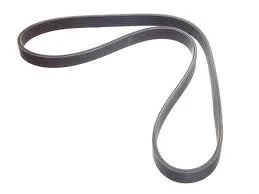- Arabic
- French
- Russian
- Spanish
- Portuguese
- Turkish
- Armenian
- English
- Albanian
- Amharic
- Azerbaijani
- Basque
- Belarusian
- Bengali
- Bosnian
- Bulgarian
- Catalan
- Cebuano
- Corsican
- Croatian
- Czech
- Danish
- Dutch
- Afrikaans
- Esperanto
- Estonian
- Finnish
- Frisian
- Galician
- Georgian
- German
- Greek
- Gujarati
- Haitian Creole
- hausa
- hawaiian
- Hebrew
- Hindi
- Miao
- Hungarian
- Icelandic
- igbo
- Indonesian
- irish
- Italian
- Japanese
- Javanese
- Kannada
- kazakh
- Khmer
- Rwandese
- Korean
- Kurdish
- Kyrgyz
- Lao
- Latin
- Latvian
- Lithuanian
- Luxembourgish
- Macedonian
- Malgashi
- Malay
- Malayalam
- Maltese
- Maori
- Marathi
- Mongolian
- Myanmar
- Nepali
- Norwegian
- Norwegian
- Occitan
- Pashto
- Persian
- Polish
- Punjabi
- Romanian
- Samoan
- Scottish Gaelic
- Serbian
- Sesotho
- Shona
- Sindhi
- Sinhala
- Slovak
- Slovenian
- Somali
- Sundanese
- Swahili
- Swedish
- Tagalog
- Tajik
- Tamil
- Tatar
- Telugu
- Thai
- Turkmen
- Ukrainian
- Urdu
- Uighur
- Uzbek
- Vietnamese
- Welsh
- Bantu
- Yiddish
- Yoruba
- Zulu
Nov . 11, 2024 05:12 Back to list
Affordable Timing Belt Options for Your Vehicle Maintenance Needs and Repairs
Understanding Timing Belt Prices Key Factors and Considerations
When it comes to vehicle maintenance and repairs, one crucial component that often gets overlooked is the timing belt. A timing belt is an essential part of an engine that synchronizes the rotation of the crankshaft and camshaft, enabling proper timing for engine valve operation. Given its critical role, understanding the price of timing belts—and what influences that price—can be beneficial for vehicle owners looking to maintain or repair their cars.
The Importance of Timing Belts
First and foremost, it's essential to understand why timing belts are significant. Timing belts are crucial for the performance and longevity of an engine. A worn or faulty timing belt can lead to severe engine damage, resulting in costly repairs. Typically, manufacturers recommend replacing the timing belt every 60,000 to 100,000 miles, depending on the vehicle model and engine type. This preventive maintenance can save vehicle owners from unexpected breakdowns and technical issues.
Factors Influencing Timing Belt Prices
1. Material and Design The composition of a timing belt can have a significant impact on its cost. Most timing belts are made from rubber, but higher-quality belts use reinforced materials such as nylon or Kevlar, making them more durable and increasing their price. For instance, a basic rubber timing belt might cost around $25-$50, while a high-performance belt with advanced materials could range from $70 to $150.
2. Brand and Manufacturer The brand also plays a crucial role in pricing. Original Equipment Manufacturer (OEM) timing belts are generally more expensive than aftermarket options. OEM parts, made by the vehicle's manufacturer, promise a perfect fit and optimal performance. In contrast, aftermarket options may offer cost savings but can sometimes lack the same quality assurance. A reputable brand's OEM timing belt might cost between $100 to $200, sometimes more for luxury or high-performance vehicles.
3. Vehicle Make and Model Timing belt prices can vary considerably based on the car's make and model. Luxury and sports cars often require specialized timing belts that can be more expensive due to their unique specifications and lower production runs. Conversely, timing belts for common, mass-produced vehicles may be more affordable due to economies of scale.
timing belt price

4. Labor Costs Beyond just the price of the timing belt itself, labor costs for installation must also be considered. Replacing a timing belt is often complex and labor-intensive, requiring specialized tools and expertise. Labor costs can range from $300 to $1,000, depending on the shop's hourly rate and the vehicle's design. Therefore, many vehicle owners opt for a full timing belt service, which includes replacing associated components like the water pump and pulleys, adding to the total maintenance bill.
5. Replacement Kits Many auto parts retailers offer timing belt replacement kits, which include all the necessary components for replacement—such as the timing belt, water pump, tensioners, and pulleys. These kits can provide significant savings compared to purchasing each component individually. Depending on the components included, a timing belt kit can range from $150 to over $500.
Tips for Vehicle Owners
When it comes to timing belt replacement, vehicle owners are encouraged to
- Research Thoroughly Understand the specific timing belt requirements for your vehicle model. Online reviews, forums, and manufacturer documentation can provide valuable information. - Shop Around Prices for timing belts and installation can vary widely between dealerships, independent repair shops, and online retailers. Don't hesitate to compare prices and seek out recommendations for reliable service providers.
- Consider Preventive Maintenance Adhering to the manufacturer’s recommended replacement schedule can prevent costly repairs down the line and extend the life of the engine.
Conclusion
The pricing of timing belts can differ based on various factors, including material, brand, vehicle type, and labor costs. With a basic understanding of these elements, vehicle owners can make informed decisions. By investing in high-quality timing belts and selecting reputable service providers, they can ensure the reliability and longevity of their vehicles while preventing potentially expensive repairs associated with timing belt failure. Remember, a little knowledge can go a long way in maintaining your vehicle’s health and performance.
-
Upgrade Power Steering Pump Belt for Smooth, Quiet Operation
NewsAug.27,2025
-
Precision Timing Belt & Chain: Engine Performance & Durability
NewsAug.26,2025
-
Precision Lathe Drive Belts: Durable & Reliable Performance
NewsAug.25,2025
-
84.5 Serpentine Belt: Durable & Precision Fit for Your Engine
NewsAug.24,2025
-
Premium Ribbed Drive Belts for Quiet Power Transmission
NewsAug.23,2025
-
High-Performance Vehicle Timing Belt for Engine Precision
NewsAug.22,2025

